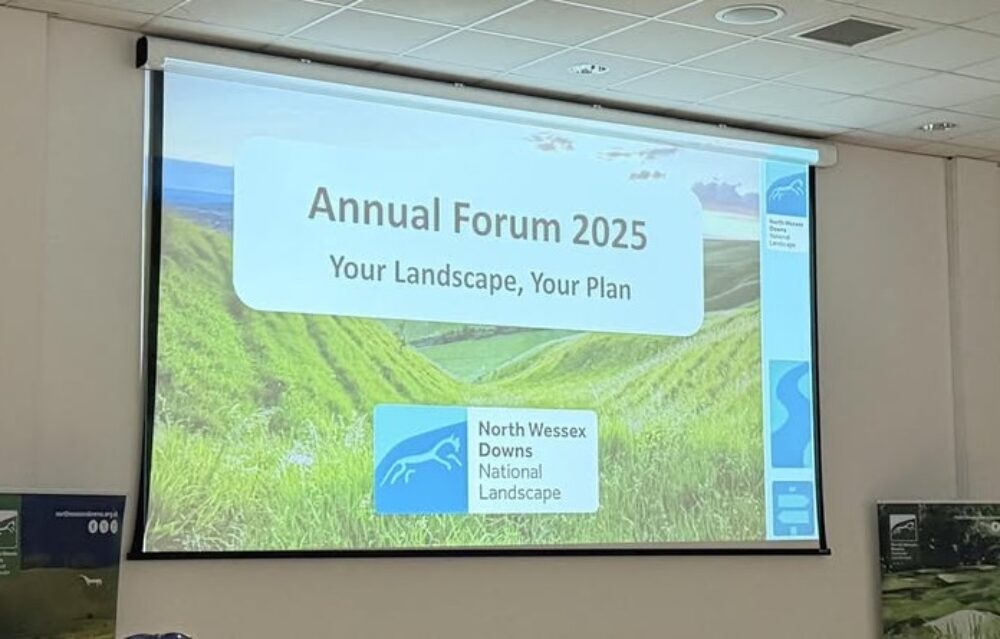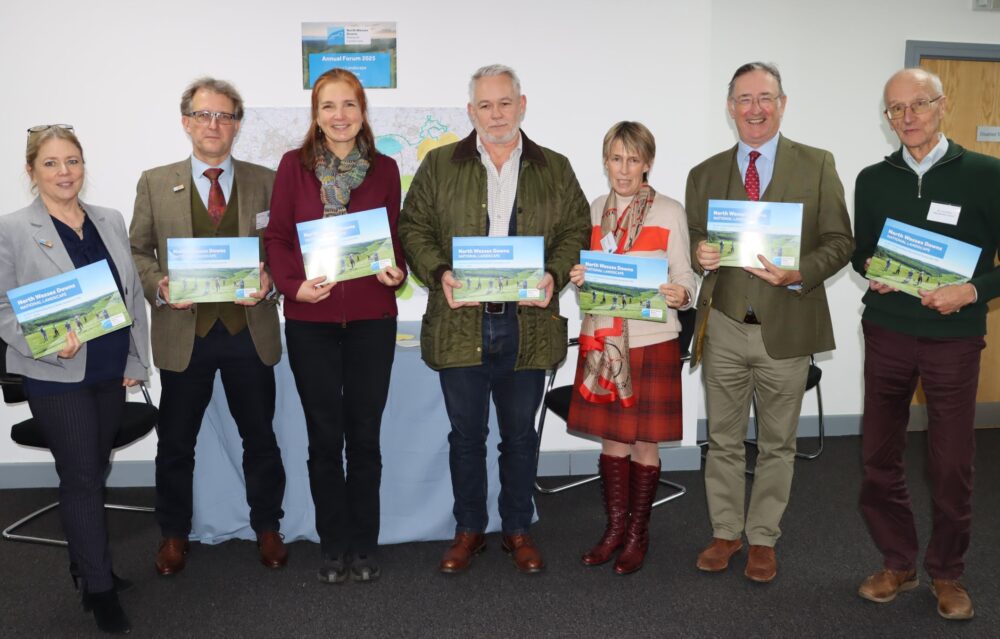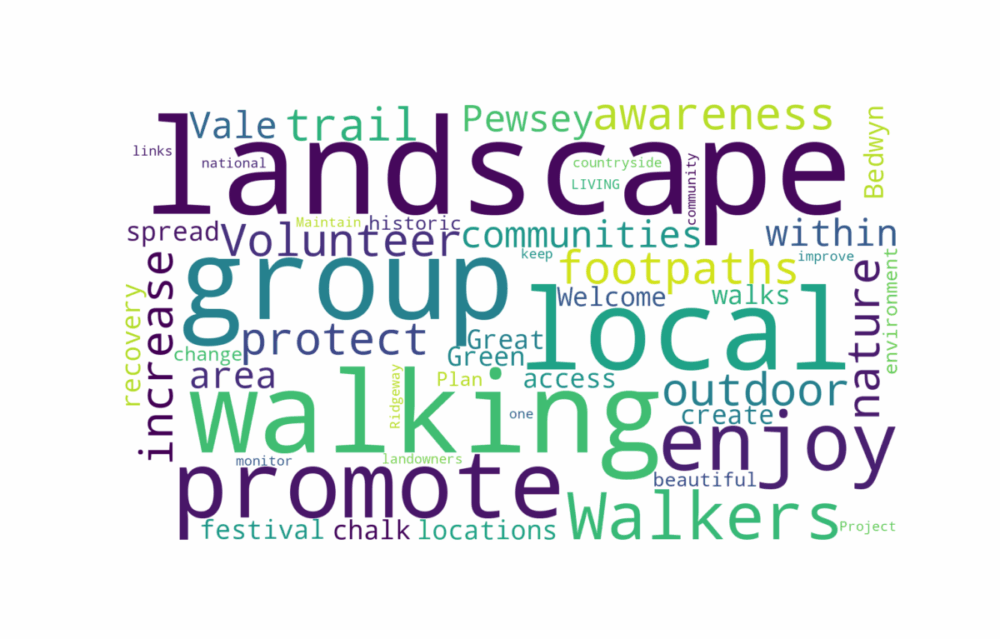An inspiring and informative North Wessex Downs Annual Forum was held at the Herongate Centre in Hungerford on the 12th November for the launch of the North Wessex Downs National Landscape (NWDNL) Management Plan.

Updates inspire and inform
Gill Haggarty, Chair of the NWDNL Council of Partners, introduced the day, followed by a whistle stop tour of progress over the last five years from Henry Oliver, Director of the NWDNL. This was followed by presentations from members of the team on current work and projects. These included support to farmers through Farming in Protected Landscapes funding, habitat restoration through the Partnerships for Nature Programme, Mend the Gap projects in the Goring Gap, and a new Landscape Character Assessment published this year. Henry Oliver then introduced the new Management Plan, outlining the key changes from the previous plan, and emphasizing the importance of everyone being involved in delivering the plan.
The presentations ended on a high, with a ‘quickfire’ session of short presentations. Ten speakers showcased something their group or community is doing that they’re proud of and helps deliver the NWDNL Management Plan. After a lunch break delegates returned to explore displays and information from a range of groups, enabling those present to find out more, ask questions and gain inspiration for their own actions.
The presentations from the day can be found on our resources page.

Management Plan launched
The North Wessex Downs National Landscape Management Plan was launched at the Forum. The five-year plan is a statutory document produced on behalf of the nine councils that currently cover the North Wessex Downs. It sets out principles for managing the nationally protected landscape, priorities for the next five years, targets for nature recovery, and policies to guide decision making.
The Management Plan is the first to be published since the law was changed to give stronger protections to National Parks and National Landscapes. It is also the first to include specific targets for nature, with a commitment to increase wildlife-rich habitat, tree canopy and woodland in the North Wessex Downs by 3,400 hectares by 2030. These targets contribute towards national targets to protect 30% of land and sea for nature by 2030.
Read more about the launch of the Management Plan, read the Management Plan or please get in touch if you’d like to receive a printed copy.
Photo: Gill Haggarty and Henry Oliver joined by representatives from Local Authorities with the Management Plan.

Pledges made to help conserve and enhance the North Wessex Downs
Throughout the day everyone was encouraged to write a pledge to take action to help deliver the new Management Plan, with lots of inspiring contributions made. These pledges have been compiled with some clear themes emerging; walking and access, nature and conservation, community engagement, awareness and education and policy and protection. Here is just a small selection of some of the pledges made;
“We will do even more for walkers access and footpaths, and spread the word about the NWDNL”
“We will continue to encourage young people to spend time outdoors learning about growing food!”
“I promise to slow down and watch and observe change in the landscape where I live – then protect.”
“Volunteer with Ridgeway Trail to monitor and maintain the trail.”
Photo shows a word cloud from analysing all of the pledges made.
Find Out More
The programme for the day and presentations can be found on our resources page.
Read more about the launch of the Management Plan, read the Management Plan or please get in touch if you’d like to receive a printed copy.

